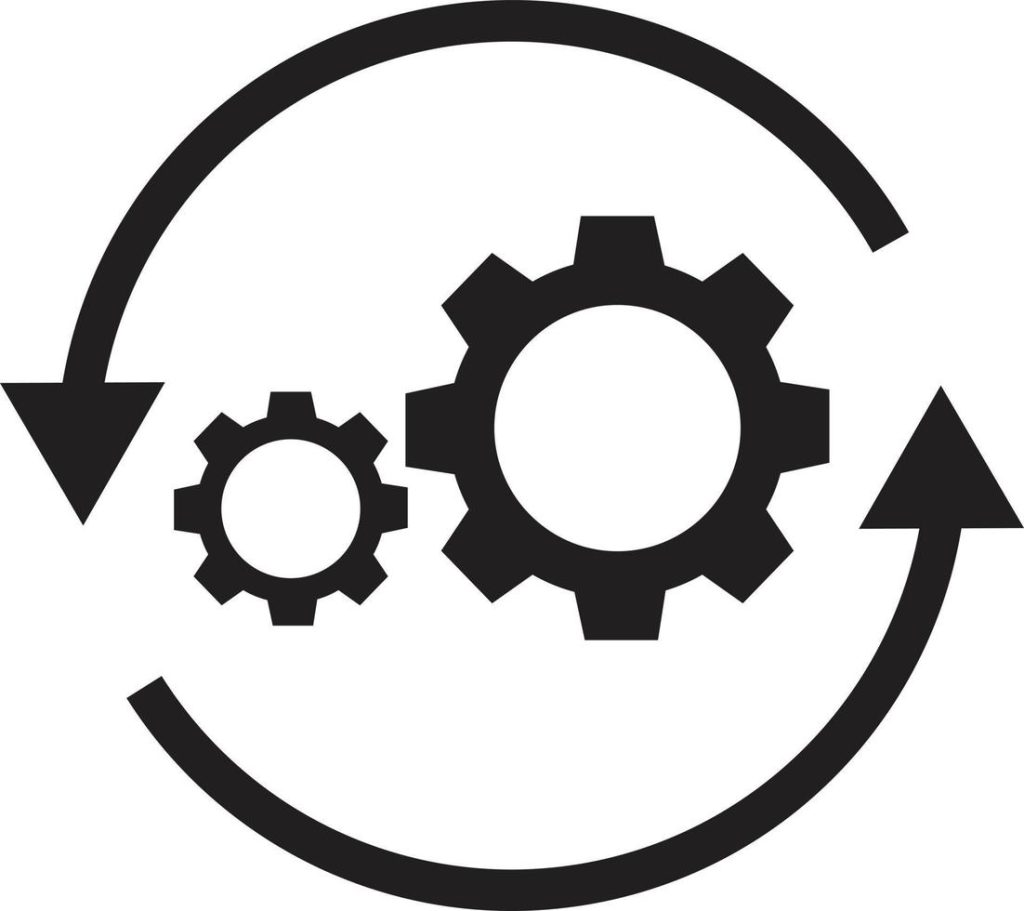A payroll invoice is a formal document issued by an employer to an employee, detailing the wages or salaries earned by the employee for a specific pay period. It serves as a summary of the employee’s compensation, including basic wages, overtime, bonuses, commissions, and various deductions, such as taxes, Social Security contributions, and employee benefits.
What You Will Learn From This Blog:
✓How Open Banking enhances payroll and invoicing efficiency
✓Benefits of integrating Finexer’s Open Banking solution
✓Step-by-step guide to implementing Finexer in your business
✓Real-world examples of companies improving processes with Finexer
✓Key features and tools provided by Finexer for seamless integration
In the rapidly evolving financial landscape, open banking stands at the forefront of innovation, reshaping how businesses manage their financial operations. This transformative approach offers a wealth of opportunities for enhanced efficiency, particularly within payroll and invoicing processes. By leveraging open banking APIs, organisations, from SMEs to large enterprises across the UK, can now access bespoke financial solutions that streamline operations, reduce errors, and ultimately, save better. The significance of open banking extends beyond mere compliance; it represents a fundamental shift towards more transparent, accessible, and user-centred financial services.
In the evolving financial landscape, HR Managers and CFOs are constantly striving to streamline operations, improve efficiency, and ensure compliance. Two critical areas that frequently present challenges are payroll and invoicing. Despite advancements in technology, many companies still grapple with issues that can hinder growth and operational efficiency. However, the advent of open banking offers promising solutions to these longstanding problems. Let’s delve into the challenges faced in payroll and invoicing and explore how open banking can be a game-changer.In the evolving financial landscape, CFOs are constantly striving to streamline operations, improve efficiency, and ensure compliance. Two critical areas that frequently present challenges are payroll and invoicing. Despite advancements in technology, many companies still grapple with issues that can hinder growth and operational efficiency. However, the advent of open banking offers promising solutions to these longstanding problems. Let’s delve into the challenges faced in payroll and invoicing and explore how open banking can be a game-changer.
Common Challenges in Payroll and Invoicing
Inaccurate Payroll Calculations ✘
Problem: Ensuring accurate payroll calculations is a complex task, particularly for companies with a diverse workforce. Errors in payroll can lead to employee dissatisfaction and potential legal issues.
Impact: Payroll inaccuracies can result in overpayments or underpayments, causing financial strain and impacting employee morale.
Delayed Payments ✘
Problem: Timely payments are crucial for maintaining good relationships with employees and vendors. However, manual processes and approval bottlenecks often cause delays.
Impact: Delayed payments can disrupt cash flow, damage supplier relationships, and affect employee trust.
Compliance and Regulatory Issues ✘
Problem: Keeping up with ever-changing payroll and invoicing regulations is challenging. Non-compliance can lead to significant fines and legal complications.
Impact: Regulatory non-compliance can result in financial penalties and damage to the company’s reputation.
Data Security Concerns ✘
Problem: Handling sensitive payroll and invoicing data poses security risks. Data breaches can compromise employee and financial information.
Impact: Security breaches can lead to financial loss, legal repercussions, and loss of trust.
Inefficient Processes ✘
Problem: Many companies rely on outdated systems and manual processes for payroll and invoicing. This leads to inefficiencies and increased operational costs.
Impact: Inefficient processes waste time, increase costs, and reduce productivity.
How Open Banking Provides Solutions
Open banking, with its emphasis on interoperability and data sharing, offers innovative solutions to these challenges. Here’s how:
Enhanced Accuracy and Automation 🗹
Solution: Open banking facilitates seamless integration with payroll systems, enabling real-time data access and automated calculations.
Benefit: This reduces the likelihood of errors, ensures accurate payroll calculations, and enhances overall efficiency.
Faster Payments 🗹
Solution: Open banking supports instant payments and streamlined approval processes. Integrating open banking APIs with payroll and invoicing systems can automate and expedite transactions.
Benefit: This ensures timely payments to employees and vendors, improving cash flow and maintaining strong relationships.
Regulatory Compliance 🗹
Solution: Open banking platforms often include compliance features that are regularly updated to meet current regulations. These platforms can automate compliance checks and generate necessary reports.
Benefit: This helps companies stay compliant with minimal effort, reducing the risk of penalties and legal issues.
Enhanced Security 🗹
Solution: Open banking uses advanced security protocols, including encryption and multi-factor authentication, to protect sensitive data.
Benefit: This ensures that payroll and invoicing data is secure, mitigating the risk of data breaches and enhancing trust.
Improved Efficiency 🗹
Solution: Open banking enables the integration of various financial tools and platforms, creating a unified system that simplifies payroll and invoicing processes.
Benefit: This reduces operational costs, saves time, and boosts productivity by eliminating manual tasks and streamlining workflows.
Finexer’s Solutions for Payroll and Invoicing
Finexer leverages open banking technology to provide comprehensive solutions that address these challenges:

Real-Time Data Access:
Finexer’s open banking integration provides real-time access to financial data. This ensures that payroll calculations are always based on the most current information, reducing the risk of errors.
Real-time data also facilitates faster and more accurate invoicing, helping businesses maintain healthy cash flow.
Automated Workflows:
Finexer automates key payroll and invoicing functions, reducing the administrative burden on HR and finance teams.
Automation includes calculating wages, tax deductions, and benefits, as well as generating and sending invoices automatically.


Seamless Integration:
Finexer’s robust APIs allow for seamless integration with existing payroll software and financial systems.
This ensures that data flows smoothly between systems, minimizing the need for manual data entry and reducing the risk of errors.
Enhanced Compliance:
Finexer keeps businesses compliant with the latest tax and labor regulations through automated updates and advanced reporting features.
Compliance is further ensured through robust security measures, including TLS 1.2 encryption and SHA-1 HMAC for data protection.


Improved Efficiency and Accuracy:
With Finexer’s solutions, payroll processing and invoicing become faster and more accurate, saving businesses time and reducing costs.
Employees receive timely and correct payments, enhancing satisfaction and reducing turnover.
Security and Fraud Prevention:
Finexer’s open banking integration includes advanced security features that protect against fraud and unauthorized access.
Regular security updates and compliance with industry standards ensure that sensitive financial data is safeguarded.

Benefits of Using Finexer for Payroll and Invoicing
✓ Time Savings:
Automated processes free up valuable time for HR and finance teams, allowing them to focus on strategic activities.
✓ Cost Reduction:
Reduced errors and improved efficiency lead to significant cost savings in payroll and invoicing operations.
✓ Better Cash Flow Management:
Timely and accurate invoicing improves cash flow, enabling businesses to manage their finances more effectively.
✓ Employee Satisfaction:
Accurate and timely payroll enhances employee satisfaction and loyalty, contributing to a positive workplace environment.
Practical Steps to Implement Open Banking Solutions
1.Integration with Existing Systems
To effectively integrate open banking solutions, businesses should establish API connections between their accounting platforms (such as Xero, Sage, and Intuit QuickBooks) and their bank accounts. This allows for seamless data transfer and automation of payments without manual entry, enhancing efficiency and accuracy.
2.Ensuring Data Security and Privacy
Implementing open banking requires rigorous data security measures. Businesses must adopt encrypted data transmission, secure authentication processes, and compliance with financial regulations to protect sensitive information and build trust with users.
3.Providing Training Resources
To maximise the benefits of open banking, organisations should provide comprehensive training for their staff. This includes familiarising them with new software interfaces and workflows to ensure smooth operation and adoption across the business.
4.Monitoring and Troubleshooting Issues
Regular monitoring of the open banking interfaces is crucial to promptly identify and address any operational issues. Businesses should set up systems to track performance metrics and errors, enabling quick troubleshooting and minimal disruption to financial processes.
Industry Insights and Use Cases
Retail: Simplifying Payroll Processes
In the retail sector, open banking has revolutionised payroll management by automating transactions and reducing manual errors. This innovation allows retail businesses to process payments swiftly, ensuring employees are paid on time, which enhances satisfaction and retention.
Tech Startups: Efficient Invoicing Solutions
Tech startups benefit from open banking by integrating APIs that facilitate real-time invoicing and payments. This capability enables startups to manage cash flows more effectively, reducing the administrative burden and allowing more focus on growth and development.
Healthcare: Enhancing Financial Management
Open banking contributes significantly to the healthcare industry by streamlining financial operations. It supports the management of complex billing cycles and improves the efficiency of transactions between healthcare providers and payers, ensuring timely and accurate financial handling.
Finance: Streamlined Compliance and Reporting
For the finance industry, open banking ensures compliance with evolving regulations while enhancing reporting capabilities. Financial institutions can leverage open banking to offer more transparent services, which builds trust and loyalty among clients.
Conclusion
Throughout this article, we’ve delved into the transformative power of open banking and its critical impact on payroll and invoicing management. The capabilities of open banking technology, from automating bulk payments to facilitating seamless API integrations, stand to revolutionise how businesses handle their financial operations, introducing efficiencies that can significantly save time and resources. By drawing on industry insights and practical steps for integration, we’ve aimed to illuminate the pathway for organisations to harness these innovations, enhancing their financial procedures and compliance with contemporary challenges.
Reflecting on the broader implications, it’s apparent that the advent of open banking ushers in a new era of financial management. Not only does it promise a more streamlined approach to payroll and invoicing but also underpins a more secure and transparent financial environment for companies of all sizes. As businesses look to navigate the complexities of modern financial systems, the exploration of open banking solutions and their capacity to solve these challenges is indispensable. Embracing these technologies will not only optimise current processes but also pave the way for further innovations in financial management, ensuring businesses remain agile and resilient in the digital age.
FAQ’s
1. How does Finexer’s Open Banking integration improve payroll and invoicing processes?
Finexer’s Open Banking integration automates data transfer, reduces manual entry errors, and accelerates transaction times, resulting in more efficient and accurate payroll and invoicing processes.
2. Is Finexer’s Open Banking solution secure?
Yes, Finexer uses advanced security measures and complies with all regulatory standards to ensure your financial data is protected at all times.
3. What are the cost implications of integrating Finexer’s Open Banking service?
The costs vary based on the size of your organization and specific needs. Finexer offers flexible pricing plans designed to deliver a strong ROI by improving efficiency and reducing manual labor costs.
4. How easy is it to implement Finexer’s Open Banking solution?
Finexer provides a user-friendly interface and comprehensive support to ensure a smooth and quick implementation process. Their team is available to assist with any integration challenges you might face.
5. Can Finexer’s Open Banking integration work with our existing payroll and invoicing systems?
Yes, Finexer is designed to integrate seamlessly with most major payroll and invoicing systems, allowing you to enhance your current setup without significant changes.
6. What kind of support does Finexer offer post-integration?
Finexer offers continuous support, including regular updates, troubleshooting assistance, and a dedicated customer service team to address any issues or questions that arise after integration.
GET IN TOUCH
